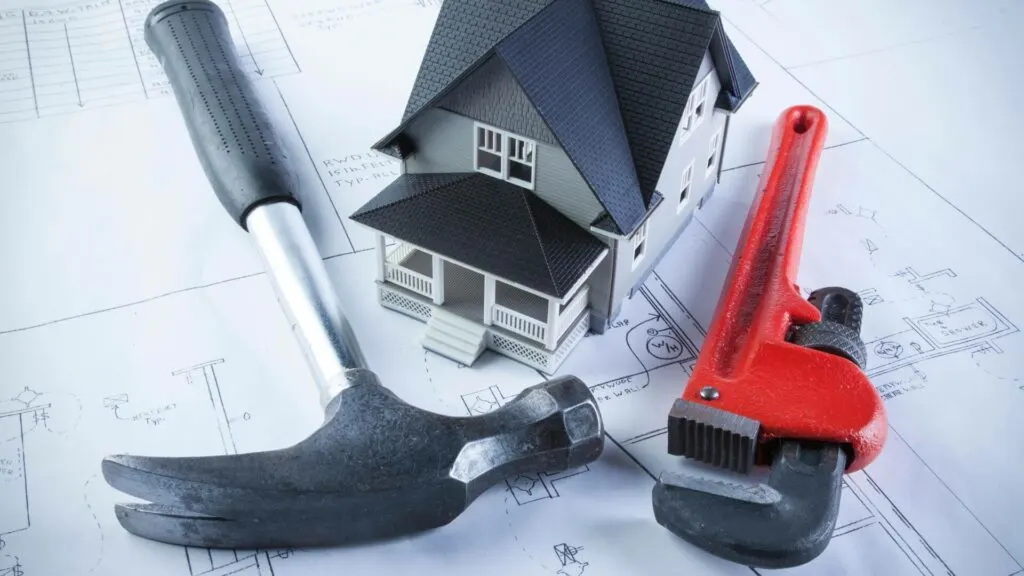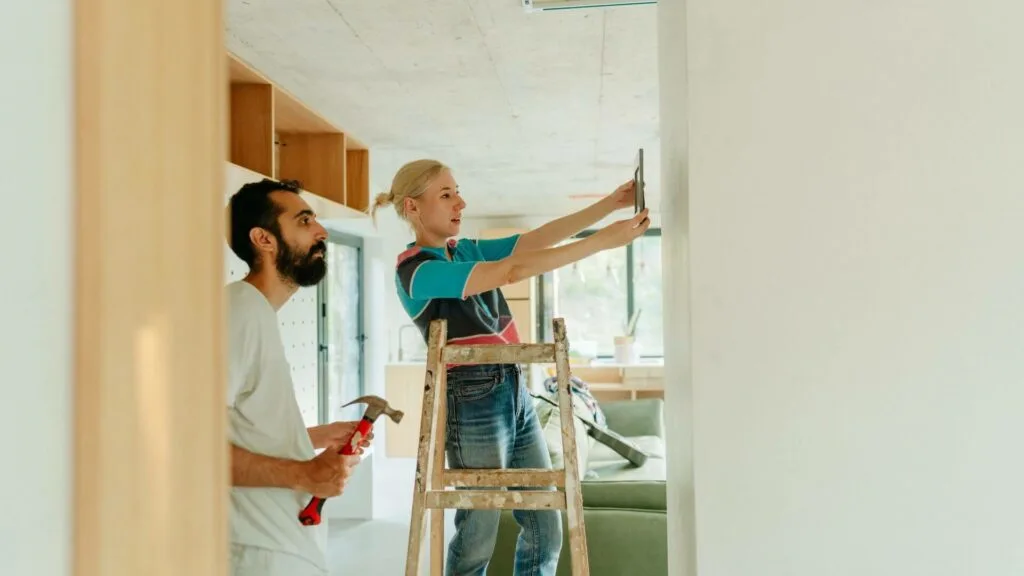Home improvement projects can be recommended for more than a few reasons. They make your home more uniquely yours and can help freshen it up. They’ll also:

- Make your home more functional
- Improve your property value
- Add to the house’s visual appeal
- Help your home become more comfortable
You’ll have to get through your home improvements to see these, which takes a lot of time and effort. As part of this, you’ll need to know how to plan a home improvement project the right way to make sure it all goes as smoothly as possible.
That’s where more than a few homeowners can struggle, especially when they haven’t been through the process before.
Thankfully, it doesn’t need to be as complicated as you could think. It’s just a matter of taking the right steps, and you’re good to go. Seven of these steps could be vital because of how much of an impact they’ll have on the process.
Plan A Home Improvement Project: 7 Steps To Take

1. Know What You Want
Before starting a home improvement project, make sure you know exactly what you want. That doesn’t just mean knowing you want to update the kitchen, for example. Instead, it means focusing on the materials and other areas involved in the project. Know exactly how you want your home to be once it’s all done.
That means taking the time to figure out the layout, what you’re adding to a room, and even what you’re taking out. The better of an image you have before starting the project, the better off you’ll be once the project is actually done.
2. Look Into Contractors
There are countless contractors you could hire for your home improvement project. While many of these can be great, it doesn’t mean all of them are. Some of them can be much better recommended than others, and it’s always worth knowing which ones you should actually consider.
Spend some time looking into the options you’re considering. Checking reviews and similar areas can help with this a lot more than you’d think. Once you’ve spent a little bit of time on it, you shouldn’t have a problem finding the best home improvement contractor for your needs.
3. Set A Realistic Timeline
As part of the planning process, you’ll need to come up with a timeline. This outlines how long it’ll take for everything to get done. It also shows when specific tasks and work will be done during the process. Make sure you have this in-hand before the home improvement project starts.
While you’ll naturally want this to be done as quickly as possible, you’ll have to be realistic about it. Some work simply takes quite a bit of time, and you’ll need to be aware of it. Don’t try to rush it, as this could end up leading to mistakes being made.
4. Develop A Budget
One of the more important parts of planning a home improvement project is to make sure you have a budget set aside for it. That doesn’t just mean having some money in the bank and leaving it at that. You’ll need to actually budget for every part of the process to make sure it goes well.
It’ll also help you figure out exactly how much you need to spend on your home improvement project. This helps you make sure you’re not spending more than you should. Put this budget together early, and include a little extra to cover any surprises that come up.
5. Plan For Potential Problems
Speaking of surprises that could come up, it’s always worth keeping in mind these can happen at any time. Few of these will be positive, and the majority of them can cause a lot of extra stress and hassle. You’ll need to be as prepared for these as possible, which means having a plan in case it does.
Part of that means making sure you’ve budgeted for anything that could happen. You’ll also need to consider the project’s timeline, which could get longer because of them. Be prepared for this to happen, and you’ll have less stress to deal with.
6. Don’t Overlook The Small Areas
When you’re planning out your project, you’ll have a specific image in mind for how the end result should be. While that’s a great place to start, it shouldn’t involve overlooking the smaller details. In fact, these deserve just as much attention as the larger parts of your home improvement project.
They’ll impact your daily life, after all, so you’ll need to spend a little bit of time and effort making sure all of the small details are the way you want them. While that means taking some extra time to figure everything out, it’ll be more than worth it.
7. Properly Prepare For The Project
With all of the above done, you’ll be quite close to actually starting your home improvement project. That doesn’t mean you’ve everything out of the way, however. Instead, it’s a matter of getting yourself prepared for the work that’s going to get started. You could need to take a few particular steps in this.
Larger renovations are notorious for this. If you’re getting your kitchen done, for example, you’ll need to sort out alternative cooking arrangements. Focus on anything you can’t do because of the projects and make accommodations so you don’t have to be completely without anything during the process.
Plan A Home Improvement Project: Wrapping Up

Trying to plan a home improvement project can be a confusing and even complicated time, especially when it’s your first time doing it. It’s easy to see why you could feel overwhelmed when you’re first starting out. Thankfully, this isn’t something you’ll need to settle for.
It could be easier than you’d think. At a minimum, you can make it a lot more straightforward than you’d think. By following the right steps, you shouldn’t have a problem getting through it all. You’ll end up with a nicer, better home before you know it.

Jessi is the creative mind behind The Coffee Mom, a popular blog that combines parenting advice, travel tips, and a love for all things Disney. As a trusted Disney influencer and passionate storyteller, Jessi’s authentic insights and relatable content resonate with readers worldwide.
